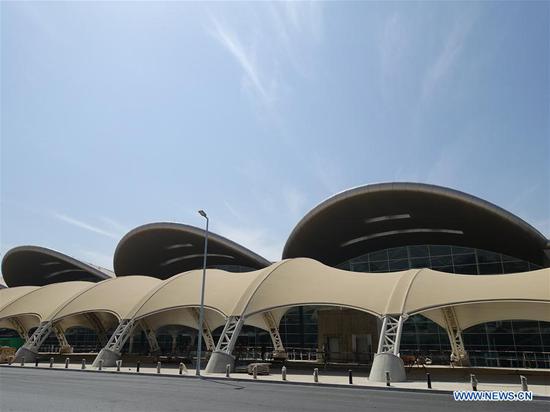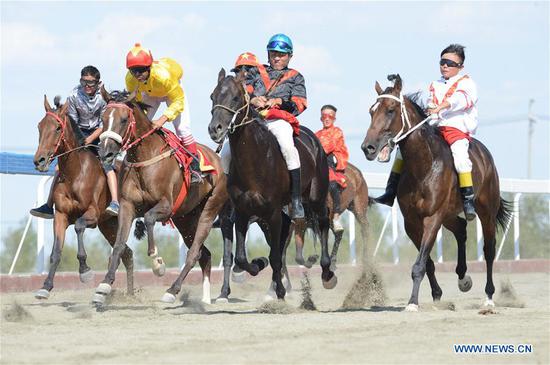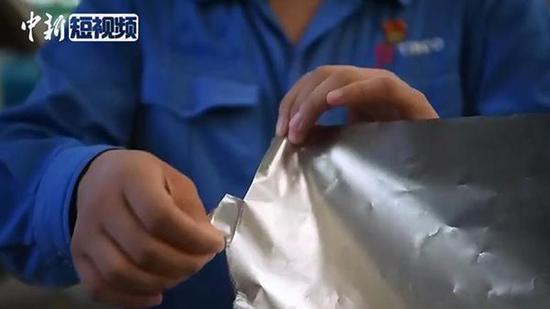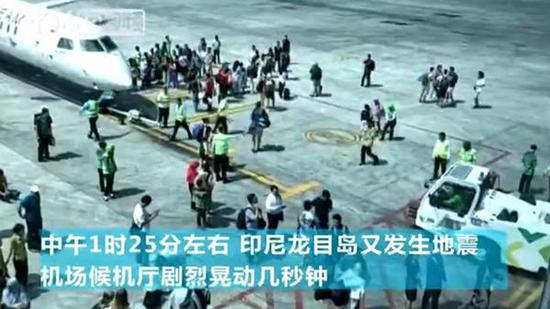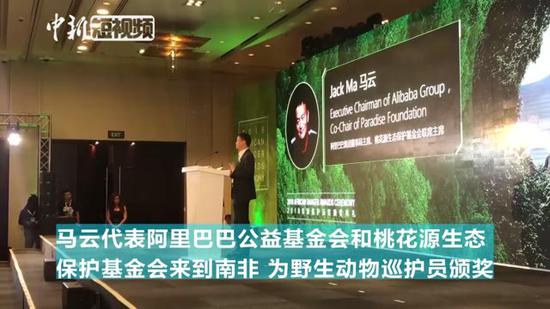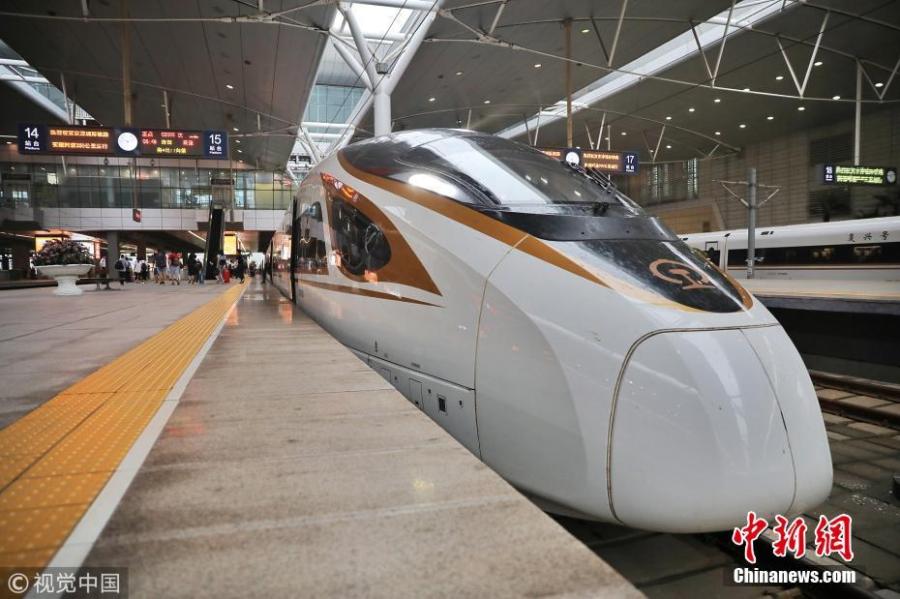
The Fuxing train starts running along the Beijing-Tianjin intercity high-speed railway at 350 kilometers per hour, up from 300 km/h, on Aug. 8, 2018. The Beijing-Tianjin intercity high-speed railway, one of China's calling cards, opened in August 2008. In 10 years, it has carried 250 million passengers. (Photo/VCG)
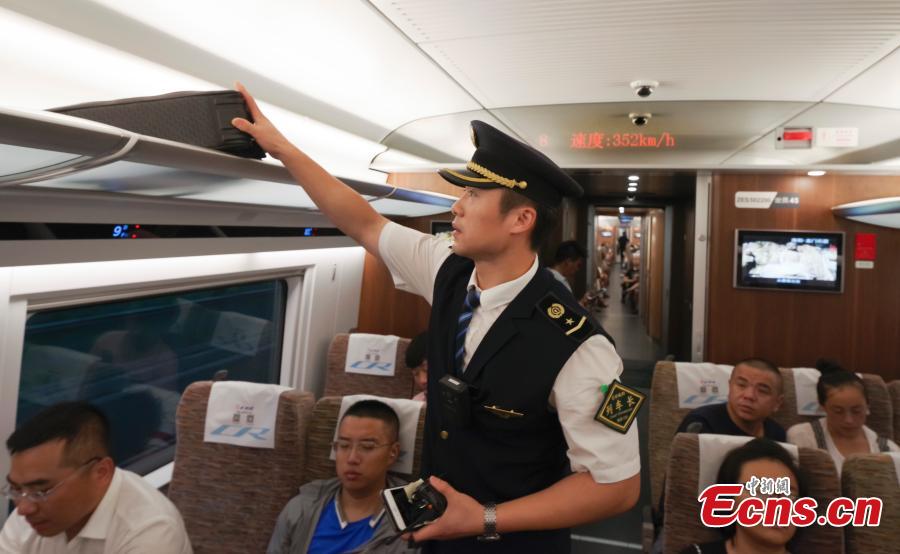
The Fuxing train starts running along the Beijing-Tianjin intercity high-speed railway at 350 kilometers per hour, up from 300 km/h, on Aug. 8, 2018. The Beijing-Tianjin intercity high-speed railway, one of China's calling cards, opened in August 2008. In 10 years, it has carried 250 million passengers. The new bullet train cuts the travel time between two cities from 35 minutes to 30 minutes. (Photo: China News Service/Jia Tianyong)
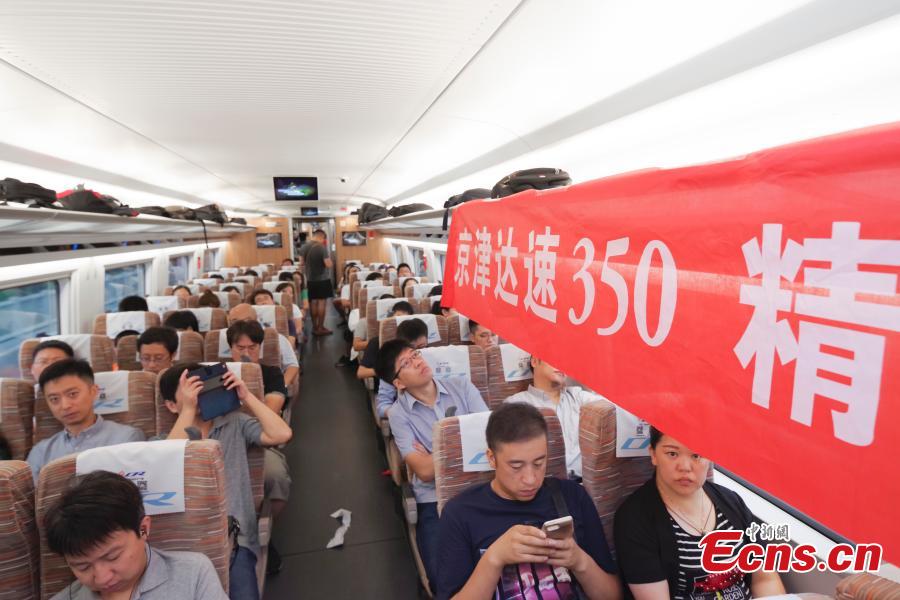
The Fuxing train starts running along the Beijing-Tianjin intercity high-speed railway at 350 kilometers per hour, up from 300 km/h, on Aug. 8, 2018. The Beijing-Tianjin intercity high-speed railway, one of China's calling cards, opened in August 2008. In 10 years, it has carried 250 million passengers. The new bullet train cuts the travel time between two cities from 35 minutes to 30 minutes. (Photo: China News Service/Jia Tianyong)
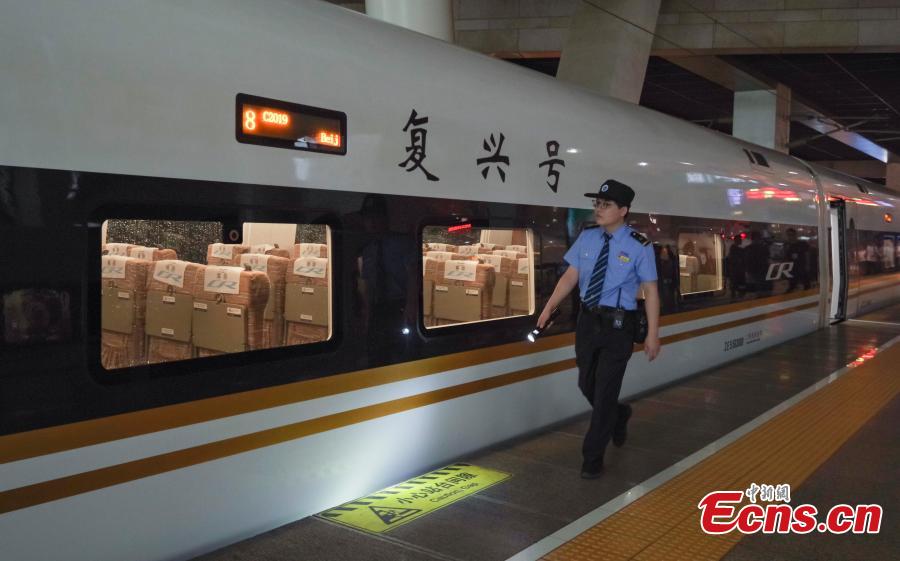
A technician checks a Fuxing train on the Beijing-Tianjin intercity high-speed railway in Beijing, Aug 8, 2018. The Beijing-Tianjin intercity high-speed railway, one of China's calling cards, opened in August 2008. In 10 years, it has carried 250 million passengers. The new bullet train cuts the travel time between two cities from 35 minutes to 30 minutes. (Photo: China News Service/Jia Tianyong)
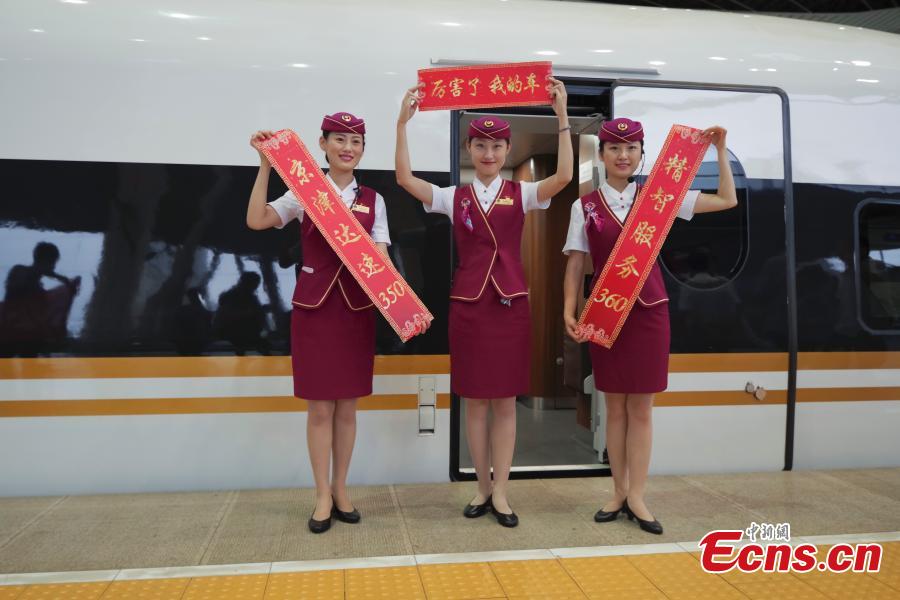
Attendants celebrate the start of Fuxing train running along the Beijing-Tianjin intercity high-speed railway at 350 kilometers per hour, up from 300 km/h, on Aug. 8, 2018. The Beijing-Tianjin intercity high-speed railway, one of China's calling cards, opened in August 2008. In 10 years, it has carried 250 million passengers. The new bullet train cuts the travel time between two cities from 35 minutes to 30 minutes. (Photo: China News Service/Jia Tianyong)
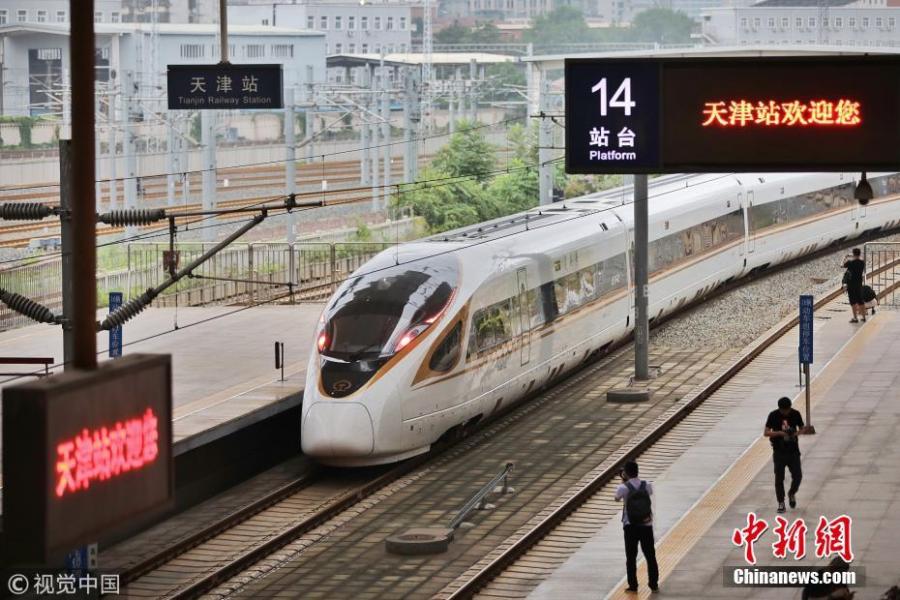
The Fuxing train starts running along the Beijing-Tianjin intercity high-speed railway at 350 kilometers per hour, up from 300 km/h, on Aug. 8, 2018. The Beijing-Tianjin intercity high-speed railway, one of China's calling cards, opened in August 2008. In 10 years, it has carried 250 million passengers. (Photo/VCG)
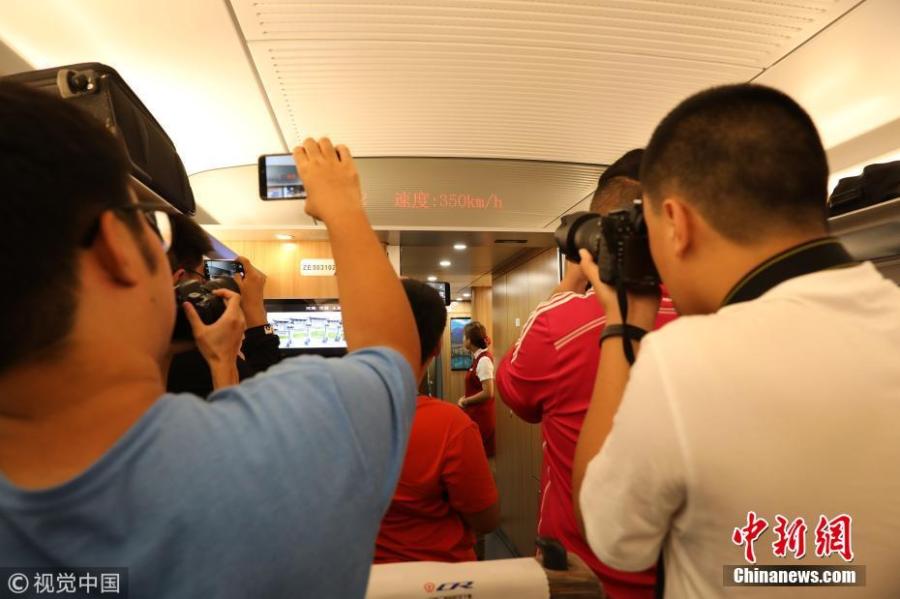
The Fuxing train starts running along the Beijing-Tianjin intercity high-speed railway at 350 kilometers per hour, up from 300 km/h, on Aug. 8, 2018. The Beijing-Tianjin intercity high-speed railway, one of China's calling cards, opened in August 2008. In 10 years, it has carried 250 million passengers. (Photo/VCG)
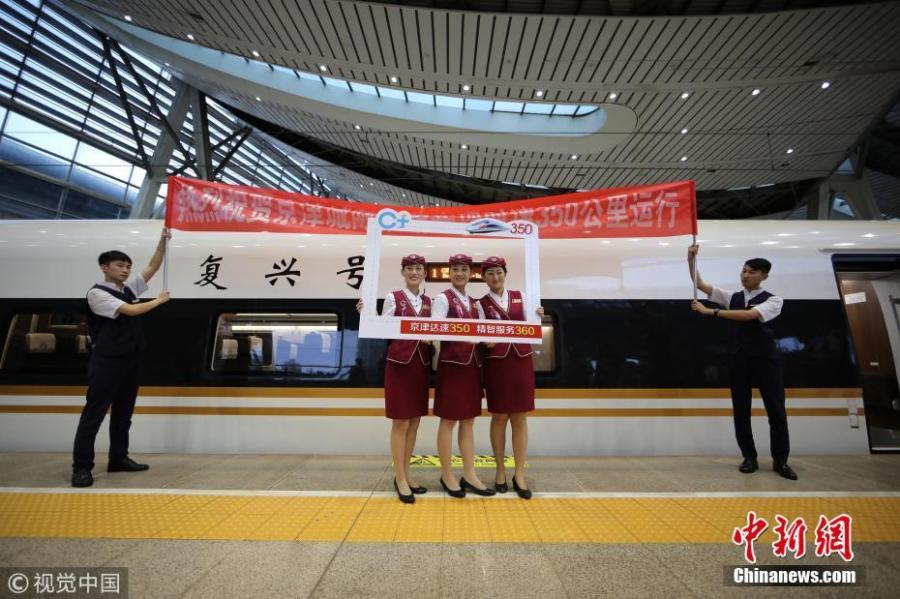
Attendants celebrate the start of Fuxing train running along the Beijing-Tianjin intercity high-speed railway at 350 kilometers per hour, up from 300 km/h, on Aug. 8, 2018. The Beijing-Tianjin intercity high-speed railway, one of China's calling cards, opened in August 2008. In 10 years, it has carried 250 million passengers. The new bullet train cuts the travel time between two cities from 35 minutes to 30 minutes. (Photo:/VCG)













